| News |
Sadako Sasaki and the legend of the 1,000 cranes
by Xehanort
On August 6 and August 9, 1945, two explosions demonstrated the horror that men are capable of inflicting in this world. The atomic bomb destroyed a whole generation of families, memories of peaceful lives and a haven for millions of people.
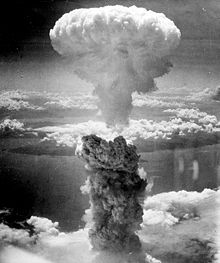
The survivors of the apocalypse were called the “Hibakusha,” literally, the “victims of the bomb.” One of them, a girl named Sadako Sasaki, who was born on January 7, 1943, was exposed to significant radiation, as she was 1.5 miles away from the bomb’s site when it exploded.
Throughout the following decade, Sadako seemed to be a healthy girl. She was happy and attended school like other children did. She had even started running in competitions! One day, she powered her team to win a race, but by the end of it had been seized with violent vertigo. Later, she couldn’t stand up after falling backwards in her classroom. The doctors at the Red Cross hospital had diagnosed a serious illness—leukemia, the disease that had already killed most of the survivors of the atomic bomb.
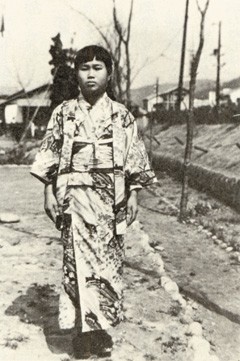
Sadako’s best friend, Chizuko, brought her an origami that looked like a crane, and explained to her the legend of the 1,000 cranes. This legend says that the crane, one of the largest birds in the world, can live for 1,000 years, and that a person who can fold 1,000 origami cranes can make his or her dream come true. Sadako’s only dream was to heal, live her quiet life and run again. Every day, she performed her folding task, sometimes with the help of her parents. It became one more reason to fight. She had no choice but to put all her strength in this legend and to pray.
However, this version of the story might not be accurate. If we observe the kanji used in “Chizuko” (千 鶴子), we see that they mean, precisely, “Child of 1,000 cranes.” This girl never actually existed. The origin of the story might be totally different. Sadako was surprised to see the origami cranes that other patients had received, which is how she learned about the legend. Here is the website maintained by Sadako’s family: http://www.sadako-jp.com/sadako.html

Another version of the story says that Sadako died from her illness on October 25, 1955 at the age of 12, having folded a total of 644 cranes. After her death, Sadako’s schoolmates wanted to finish her task, so they folded the remaining cranes. They put the origami garlands on Sadako's grave, and left them to float in the wind. Again, however, the real story is different. Sadako folded more than 1,000 cranes, but in vain. Her schoolmates and students from more than 3,000 schools in nine countries collected a large sum of money to build a statue representing Sadako.
The origami crane has become a symbol of peace in Japan. Even today, students fold paper cranes and, during their school trips, think about Sadako's life.
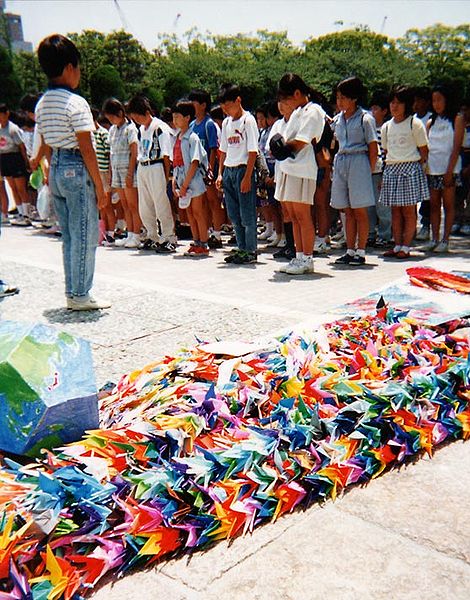
One can still admire Sadako Sasaki’s statue, which portrays her holding, in opened hands, a giant gold crane. The inscription on its base reads, “This is our cry. This is our prayer. Peace in the world.” These words were written by her schoolmates.
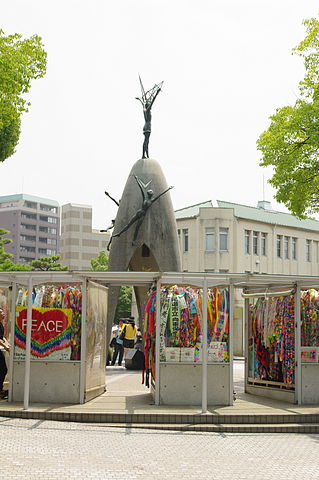
Many movies and books were based on this story, which might explain the reason for the discrepancies. Following is Haiku poetry that Sadako Sasaki wrote when she was 12:
"Peace Crane, I will write peace on your wings and you will fly all over the world."
Many children around the world still send origami cranes to Hiroshima so that they can be displayed at the statue of Sadako. You can start folding origami cranes yourself; send them to this address:
Peace Promotion Division
The City of Hiroshima
1-5 Nakajima-cho Naka-ku,
Hiroshima 730-0811 Japan
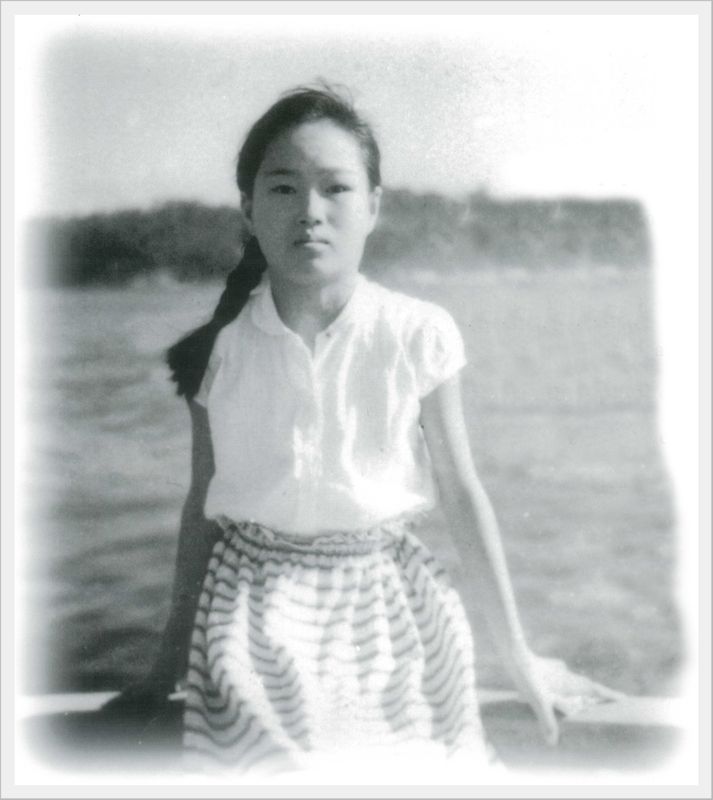
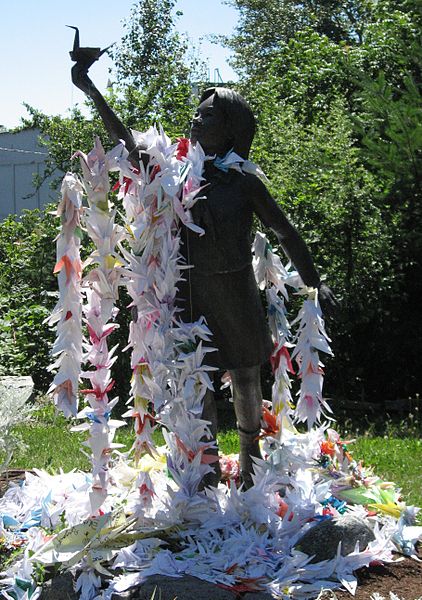
Credits:
- http://commons.wikimedia.org/wiki/File:Hiroshima_senzaburu.jpg
- http://commons.wikimedia.org/wiki/File:JP-Hiroshima-Friedensturm.jpg
- http://en.wikipedia.org/wiki/File:Atomic_bombing_of_Japan.jpg
- http://ja.wikipedia.org/wiki/%E3%83%95%E3%82%A1%E3%82%A4%E3%83%AB:Origami_(2).jpg
- http://fr.wikipedia.org/wiki/Origami



















Thakzhan
Rita777